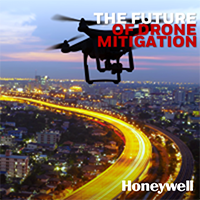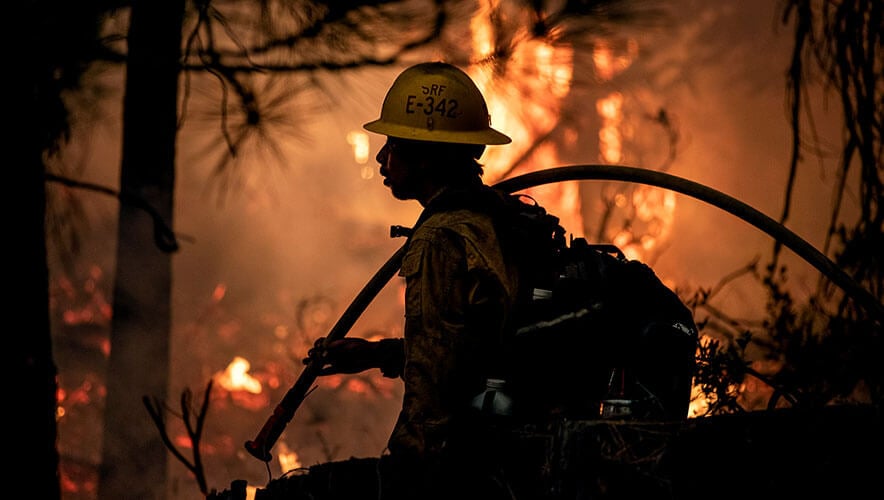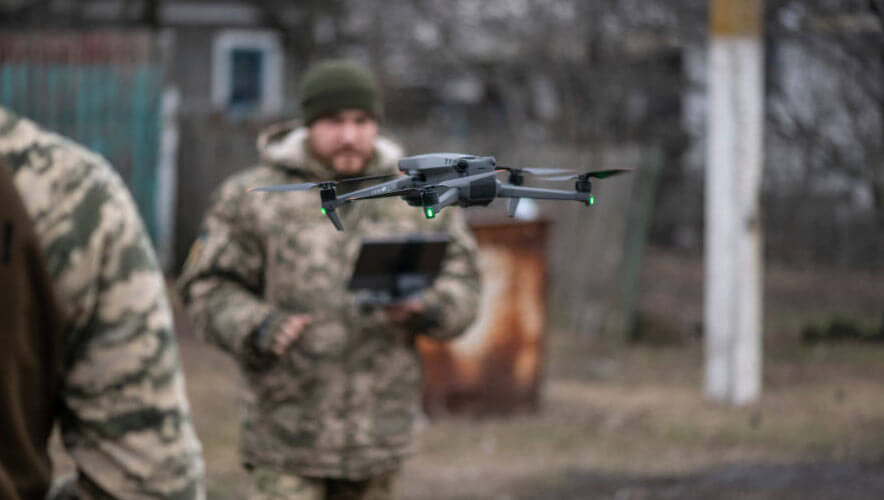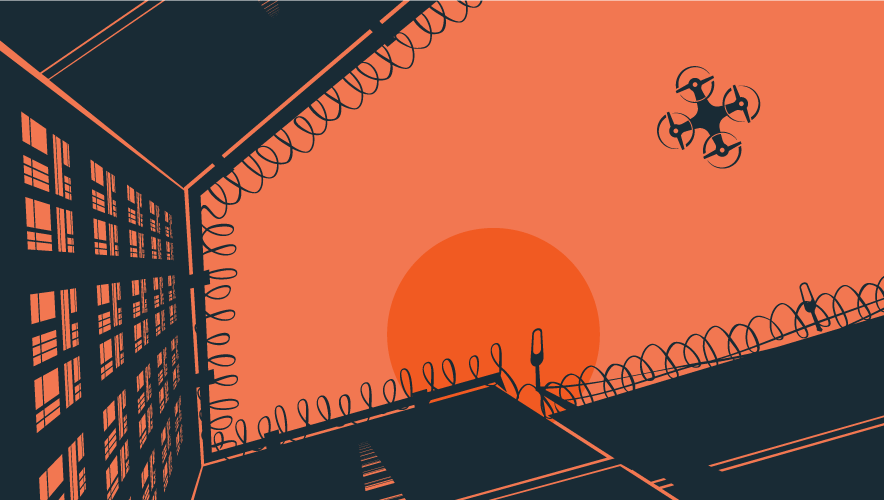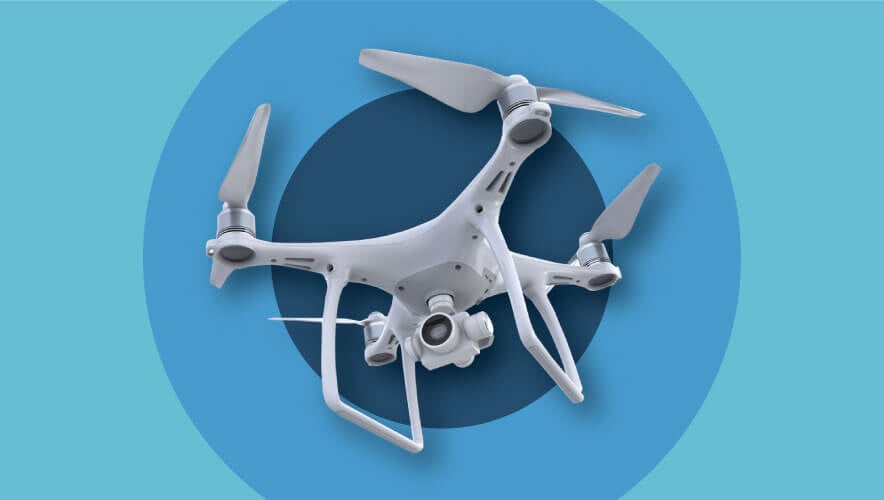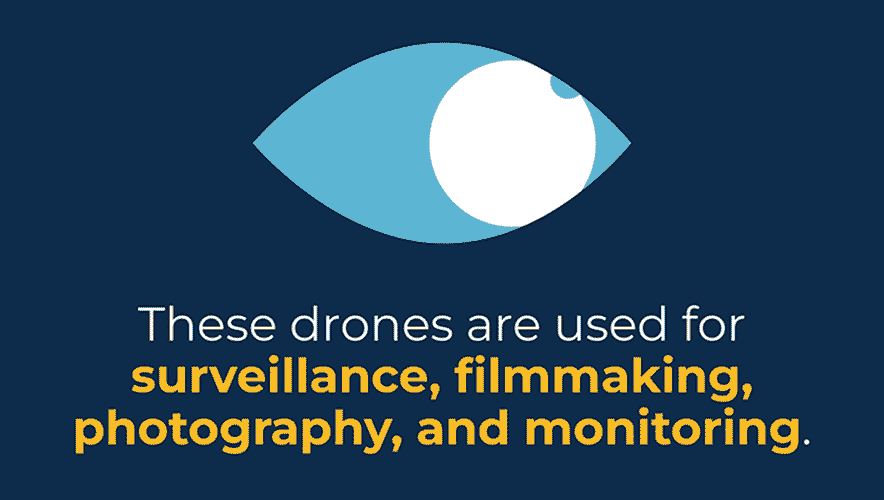The Diversification of the Drone Market: A Close-Up on Counter-Uncrewed Aerial Options
Commercial uncrewed aerial system (UAS) technology—sometimes referred to as drones—came to the market in 2010 with a product from Parrot. Thirteen years later, the technology space has exploded with thousands of manufacturers and drones in the millions.
Security professionals can no longer simply plan for the ground game; they must include the air in their risk assessments and focus their mitigation plans, programs, and technical solutions on “looking up.” It is now critical to understand how the market compartmentalizes capabilities, technical solutions, and use cases so security and public safety professionals can make informed decisions as they develop and refine their programs.
This market can be distilled into five distinct sectors with some overlap by a few specific companies. Understanding how the market is divided can support your knowledge growth and help with any purchasing decisions you may need to make as you refine your security programs.
Here is the breakdown:
- Drone sellers/manufacturers. The commercial drone market already produces technology for a myriad of use cases and is expected to grow to $65 billion in sales by 2025. These companies produce drones that are used for deliveries, inspections, and monitoring.
- Drone detection and monitoring. This segment of the market creates and sells systems designed to detect when drones and UAS are flying in the airspace to monitor them.
- Counter-uncrewed aerial systems (CUAS). This portion of the market creates and sells systems that can be used to impact a UAS’s flight.
- Drone as a Security Service. This market segment allows security practitioners to use drone technology as a patrolling and quick reaction resource. It can be implemented for a permanent solution or contracted for special events.
- Training, exercises, and operations. A growing section of the market that is using drone vulnerability and risk assessments and drone emergency response planning as creative ways to identify risk and plan to train staff to react.
Politicians are late to the game to understanding drones and their effects on society, but there is some movement to federally regulate the technology in the United States.
In the meantime, a clear and present danger exists in the private sector at public events where the existing rules benefit the drone and its operator because there is uncertainty about who has the authority to counter an active drone and when circumstances are appropriate for an organization to do so. In essence, we can detect, monitor, and geolocate the operator, but a means for a private company to counter the platform itself (such as shooting it down) is not allowed under current U.S. law.
The purpose of CUAS is to mitigate a drone’s ability to continue its flight.
Drone detection and monitoring technologies have promulgated the market in the past several years with hundreds of companies coming to market with a solution. Many times, this technology is marketed as a CUAS platform, but it is simply an indication and warning capability that attempts to give the operator reliable data on the drone, its location, and, in some cases, the location of the operator.
This is all helpful and gives public sector businesses the ability to detect, warn, and, in some cases—where refined policies, procedures, techniques, and tactics are worked out—provide for an action that can be taken. Unfortunately, most detection and monitoring capabilities rely on radio frequency identification. A few companies offer radar and optical solutions. Using these solutions individually, however, is not recommended. In the end, the best answer is a layered sensor approach that is linked to a CUAS technology.
A Closer Look at CUAS
Counter-uncrewed aerial systems (CUAS) are technologies that can have a physical impact on a drone in flight. The purpose of CUAS is to mitigate a drone’s ability to continue its flight. In simple terms, CUAS is designed to disrupt drone activity.
SponsoredHoneywell Drone MitigationCollecting real time data on drones in your airspace helps evaluate potential threats going forward so you can better protect your facility and critical assets. |
Currently, CUAS can operate in three forms:
Kinetic, to include laser, direct energy, and impulse options. Kinetic action against a drone in flight can be simply described as a direct action to destroy the drone and prevent it from continuing its flight. We see this tactic used in conflict zones, like Ukraine, where the risk of collateral damage is not a significant factor in a decision to destroy a drone. A good example of defeating drones in this manner would be high-end air defense systems firing a munition directly at a drone.
Electronic jamming of the signal. Electronic jamming of a drone’s control signal renders it ineffective. It is another means most often seen in conflict zones where signal disruption is less of a concern than it would be in a private sector environment. Disrupting radio frequency or GPS signals is possible but not viable in a normal societal environment. This is because it could potentially disrupt emergency response operations and jammers are subject to some prohibitions by the U.S. Federal Communications Commission. Both kinetic and jamming are techniques that exist primarily in war zones.
Taking control/command of the signal. Take control/command is the most viable option of a CUAS capability that could provide risk mitigation at a private sector venue under the right circumstances. Essentially, this capability takes control of the drone’s control signal and allows the mitigating authority to land the drone in a safe location. This limits the risk associated with collateral damage and allows for an inspection of the drone for nefarious cargo. Although this technology does create signal interference, with the right authority and approvals from the U.S. Federal Communications Commission or Federal Aviation Administration, public events could safely protect their venues using this tactic. Legislation to require training and certification would be needed to allow the use of this tactic beyond federal, state, local, and tribal jurisdictions.
All these options are being used in the ongoing war in Ukraine in an unrestricted environment where major combat operations exist. Outside of a conflict environment, however, the ability to use CUAS is more limited.
CUAS in the United States
In the United States, for instance, the U.S. Department of Homeland Security (DHS) has the authority to use CUAS to protect covered facilities and assets from unlawful UAS activity for specific reasons. Covered facilities and assets include DHS missions (those undertaken by the Coast Guard, Secret Service, Federal Protective Service, and Customs and Border Protection) and joint missions or U.S. Department of Justice missions—such as National Special Security Events (the Super Bowl), investigations, and mass gatherings upon request of local officials.
The U.S. Federal Aviation Administration (FAA) is working alongside multiple stakeholders to establish regulatory guidance on CUAS. But in a March 2022 U.S. Department of Transportation Office of Inspector General report, the authors found that while the FAA is working on CUAS changes, delays in testing and mitigation systems could impact aviation safety.
Outside of a conflict environment, the ability to use CUAS is more limited.
For instance, the FAA is required to test and evaluate at least 10 detection and CUAS technologies or systems at least five U.S. airports to help the administration develop a plan to certify, permit, authorize, and allow deployment of UAS detection and mitigation technology in the future. The initial tests were delayed due to COVID-19 and are now not anticipated to be completed until sometime in 2023.
“As a result of the delayed testing, FAA will not be able to assess safety risks and benefits until 2024 at the earliest, which will delay the agency’s use of that data to inform industry standards and its plans to authorize CUAS in the airport environment,” according to the report.
Meanwhile, U.S. President Joe Biden’s administration released the Domestic Counter-Unmanned Aircraft Systems National Action Plan in April 2022 to expand where CUAS can be used, who is authorized to use it, and how it can be accomplished lawfully, according to a White House fact sheet.
In a letter to leaders of the U.S. Congress in July 2022, Tom Quaadman, executive vice president of the U.S. Chamber of Commerce’s Chamber Technology Engagement Center, wrote that the Chamber supports the “responsible expansion of CUAS detection and mitigation authorities with appropriate safeguards” and considered the National Action Plan a step in the right direction.
But Quadmann also wrote that congressional action was needed to advance the National Action Plan and provide a comprehensive approach to CUAS. Congress did not act on this recommendation in 2022 and has yet to in 2023.
To put it bluntly, we are at a critical point for action, yet the discussion remains stalled. This remains, based on options for mitigation, the biggest threat to large public gatherings and requires an acknowledgment of the reality that we must address the “air domain” in everyday security programs.
Next Steps
In the meantime, there are steps security practitioners can—and should—take to address UAS threats and enhance CUAS authority. A good approach should consider the following steps:
- Form an official public/private CUAS task force with decision authority. The task force should identify and approve technologies for purchase and use at large private-sector public events, including detection, monitoring, and take control components.
- Provide certification training and testing for private businesses that wish to implement the technology, similar to the FAA Part 107 requirement for drone operation.
- Establish a national training area that certifies take control operators on the use of the technology while building proficiency in a training environment.
- Form a task force for “no notice” certification/inspection capability that can evaluate implementation while providing quality control during execution. This capability should have the authority to cease operations at locations that have not met requirements or have shown the inability to successfully use the technology.
- Instill the duty of care responsibility for private businesses as it pertains to public security and safety during large events.
Bill Edwards, CPP, PCI, PSP, CPD, CIMP, is a retired U.S. Army colonel with more than 34 years of experience as a security, safety, and intelligence professional.
© Bill Edwards

